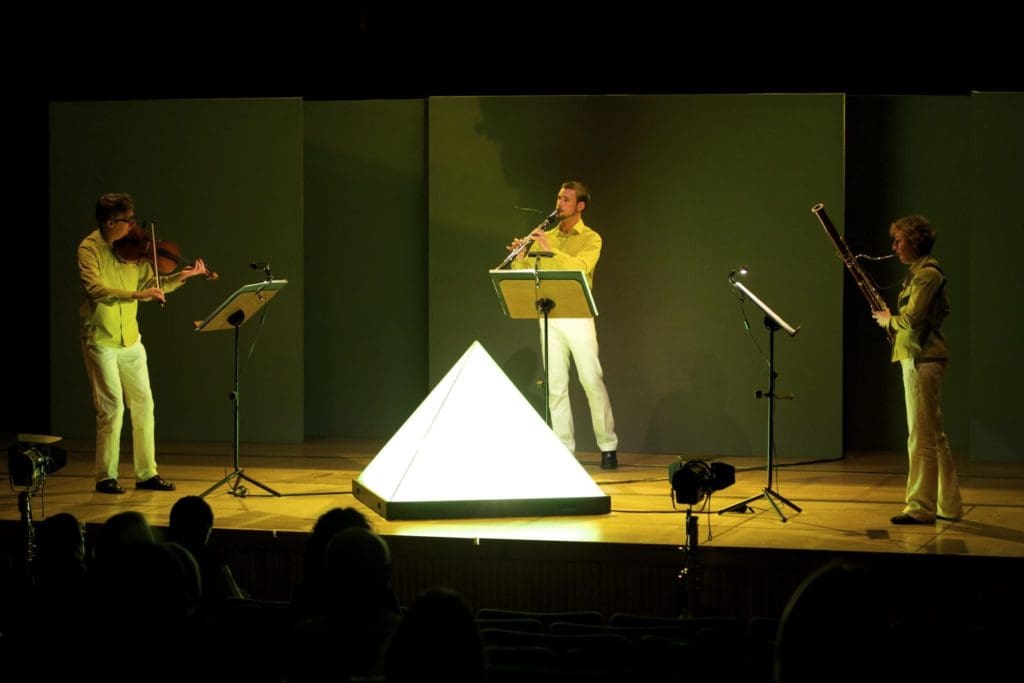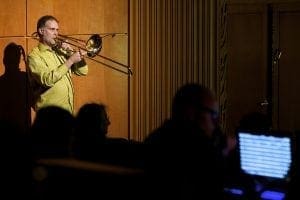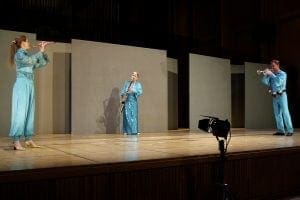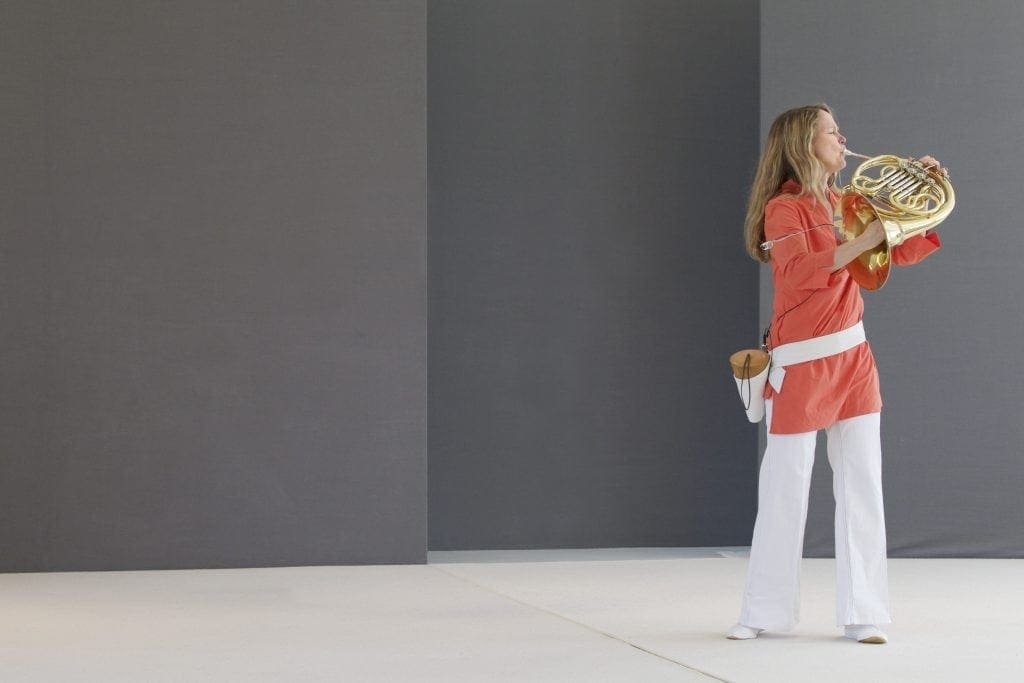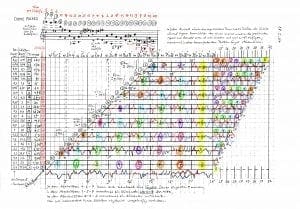Revelatory Hours: An Interview With Elizabeth Huston
“New means change the method, new methods change the experience, and new experiences change man… Whenever we hear sounds, we are changed, we are no longer the same, and this is the more the case when we hear organized sounds, organized by another human being; music.”
 Coming from most, these words might not ring as all that profound, but coming from Karlheinz Stockhausen—easily one of the most important figures in the development of 20th and 21st century music—they take on a much greater resonance. One would be hard-pressed to find another composer who did more to challenge and retune the ears of musicians and listeners alike in the last century than the enigmatic genius, but the kind of change to which he was referring wasn’t one of alteration, but one of revelation. To him, music was a prompt for self-discovery. “I think [music] is only a means, it’s like a spiritual food, and it will be used by certain people who discover a certain identity of what they are and what’s there vibrating. They choose more of it, they like it—liking means, as I always say, remembering. When I like something, then I discover something that I have been before, that is profoundly already within me. It resonates, like a piano that you hit,” he offered towards the end of a 1971 lecture.
Coming from most, these words might not ring as all that profound, but coming from Karlheinz Stockhausen—easily one of the most important figures in the development of 20th and 21st century music—they take on a much greater resonance. One would be hard-pressed to find another composer who did more to challenge and retune the ears of musicians and listeners alike in the last century than the enigmatic genius, but the kind of change to which he was referring wasn’t one of alteration, but one of revelation. To him, music was a prompt for self-discovery. “I think [music] is only a means, it’s like a spiritual food, and it will be used by certain people who discover a certain identity of what they are and what’s there vibrating. They choose more of it, they like it—liking means, as I always say, remembering. When I like something, then I discover something that I have been before, that is profoundly already within me. It resonates, like a piano that you hit,” he offered towards the end of a 1971 lecture.
This April, FringeArts will present Stockhausen’s KLANG, a day-long performance of the storied composer’s final, unfinished work, and the presentation is sure to provide attendees with hitherto unseen and unheard sonic experiences. In fact, this presentation will be the first time anyone will have the opportunity to hear the work in its entirety in a single day—all 21 completed compositions of the intended 24. Charting the soul’s journey from the body into the afterlife and featuring music that ranges from intimate chamber pieces to head-spinning electronic explorations, the program provides audiences space to reflect on time, spirituality, reality, and the meaning of mortality. As captivating as so many of KLANG‘s pieces are, at its core the work is deeply meditative, reflecting Stockhausen’s philosophy of music as a tool for self-discovery and, in turn, transformation.
Recently, we caught up with Elizabeth Huston—harpist, educator, curator, and co-organizer of the presentation—to learn more about the background of this landmark work, how this presentation and its assembly of collaborators came together, and what audiences can expect at this all-day event come April.
FringeArts: How did the idea of performing KLANG with these collaborators come about?
Elizabeth Huston: In 2014 I had the idea of planning a performance of all of Luciano Berio’s Sequenzas for the 2014 Fringe Festival. The Sequenzas are 14 different pieces written by Berio over the course of his career (1958 to 2002). I noticed while researching the pieces how Berio’s “voice” changed and evolved while Berio grew as a composer, even though each piece of the series keeps his distinct voice and perspective. I decided to search for more sets of pieces like that, and found quite a few, which resulted in me starting my Composit series. The second performance was all of Davidovsky’s Synchronisms, and this will be the third.
Stockhausen’s KLANG is a little different. Instead of being pieces written over the course of Stockhausen’s life, they are the last pieces he wrote (2004-2007). He died hours after completing the twenty-first Hour of KLANG, making this his final opus, the culmination of his life’s work. Since this piece was intended to be composed of 24 Hours, it is especially poignant as a reminder that we all die with unfinished business.
These pieces are notoriously challenging and dense, so I knew I needed collaborators on many fronts. Joe Drew worked with Stockhausen personally and knows his work intimately, so I am running my ideas by him to ensure an authentic communication of Stockhausen’s vision. MusikFabrik also knew Stockhausen personally, and they will be coaching our other performers, ensuring the highest quality performances possible. Stockhausen assigned each of the twenty-one parts of KLANG a specific color which is important to communicate. Thomas Dunn was a perfect fit for lighting design as he is known as a painter of light and can use colors incredibly effectively in his lighting. Finally, these pieces are very theatrical and musicians are not always the best actors, so we roped in Adrienne Mackey to push our performers to embrace the duality of these pieces and bring them to life.
FringeArts: What are some of the important, or unique artistic choices that happen in such a long form presentation?
Elizabeth Huston: This piece will run approximately 14-hours, so it is critical that the audience has a lot of freedom without disturbing the art. I’m sure there will be a few people who will want to commit to seeing all 21 “Hours” (each piece is called “Hour X”, which is very confusing when talking about time). Most people will need breaks. We’ve made a lot of choices related to this, both artistically and logistically. Seating will be flexible with options to lay on the floor and sit in a variety of manners. Those who want to stay for long periods will be able to keep comfortable. The audience will be free to come and go between “Hours.”
For those who need a break from the music, there will be lectures going on from performers and Stockhausen experts, reference stations available for learning more about the piece and composer, and scholars hanging about to answer questions and start conversations. People are also absolutely free to leave the venue entirely and come back when they’re ready. The performance will be the same on Saturday and Sunday, so we will offer two-day passes for people who want to see many of the “Hours” but need two days to spread it over. Adrienne and I are also discussing ways for people to move within the venue during performances to gain new perspectives, get closer to the music, and hear in new ways.
This piece is about time, and takes a full day to perform. The translation of the full title is SOUND: The 24-hours of the Day. Our aim is to encourage listeners to take pause and spend this time meditating on their own lives and how they use, perceive, and experience time. KLANG is also about a spiritual life. The first five “Hours” are related to Christian spirituality, dealing with the Ascension of Christ, Pentecost, and Heaven. The middle “Hours” are Stockhausen’s view of the sounds found in Heaven. The final nine “Hours” take a sharp left turn and are based on the Urantia Book, a spiritual and philosophical tome that appeared sometime between 1924 and 1955. No one knows when it was published because no one knows who wrote it, and in the text it claims to be written by celestial beings. This book deals with a version of our universe, Urantia being the book’s word for Earth. Even though most people believe this to be a work of science fiction, Stockhausen believed it was all true, and uses the final electro-acoustic Hours of KLANG to create sound-worlds and texts that he believes describe the planets and universes from Urantia.
FringeArts: What do the visuals allow you to play with in terms of the overall concert experience?
Elizabeth Huston: I am fascinated by finding new ways to engage and communicate. Oftentimes, musicians spend months working on a piece and get to know it intimately. How can they communicate everything they have come to understand about the piece through performance? I think visuals help considerably, especially when playing for non-musicians. As I mentioned, color is very important in these pieces, and our lighting designer Thomas Dunn will be creating light paintings for each piece using their assigned colors.
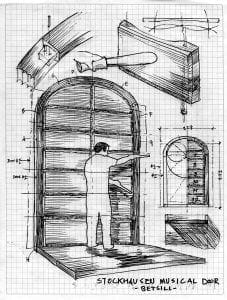 Some of the pieces are already innately visual. For example, Hour Four is called “Heaven’s Door” and features a percussionist beating on a tuned door, waiting to be admitted into heaven. At the end, the door finally opens to much cacophony. Hour 10 has an assigned light sculpture as the centerpiece. For others, we will be using visuals to communicate musical ideas. For example, Hours 6 through 12 are a showcase of the sounds found behind Heaven’s Door. They all consist of musical themes that stay the same, but are rearranged from Hour to Hour. These themes will be illuminated and mirrored through lighting cues, helping audiences recognize the importance of their returns, connecting them to what they’re hearing.
Some of the pieces are already innately visual. For example, Hour Four is called “Heaven’s Door” and features a percussionist beating on a tuned door, waiting to be admitted into heaven. At the end, the door finally opens to much cacophony. Hour 10 has an assigned light sculpture as the centerpiece. For others, we will be using visuals to communicate musical ideas. For example, Hours 6 through 12 are a showcase of the sounds found behind Heaven’s Door. They all consist of musical themes that stay the same, but are rearranged from Hour to Hour. These themes will be illuminated and mirrored through lighting cues, helping audiences recognize the importance of their returns, connecting them to what they’re hearing.
Stockhausen was fascinated by all the senses. We obviously are showcasing sight and sound heavily. Stockhausen also assigned different scents to each hour (incenses to be burned). For the sake of those who are sensitive, we will not be forcing these scents on everyone, but people will be welcome to come smell the assigned incense.
There are also several very tactile pieces. “Cosmic Pulses” for example is a purely electronic piece, which is performed on 8 channels. Because it moves around the space so quickly, people often feel themselves traveling with the sound. The deepest sounds result in a lot of physical sensations because of the vibrations.
FringeArts: What do you keep coming back to in your discussions about the work with your fellow collaborators?
Elizabeth Huston: We talk the most about the audience experience. How do you create a 14-hour-long event that can be enjoyed by both fanatical music enthusiasts and non-musicians who may have never heard contemporary music? We are shaping an environment that accounts for every entry point and perspective, making sure that no one feels like this was not built for them. This piece is especially easy to do this for since Stockhausen creates an incredible story with this work.
FringeArts: What have you worked on most in fine-tuning KLANG?
Elizabeth Huston: The most work is certainly coming from the performers themselves. These pieces are monstrously difficult and virtuosic. We have been rehearsing since August, and they will need all the time they can get. The most difficult thing about performing KLANG is that there isn’t much room for error, these pieces are very particular and need to be performed at the highest level to communicate effectively. Luckily Philadelphia has some of the finest performers in the nation and we can certainly do KLANG justice.
Stockhausen’s KLANG
Analog Arts & Elizabeth Huston
April 7-8
FringeArts
140 N. Columbus Boulevard
$40 for One Day Pass
$75 for Two Day Pass
$25 for KLANG Up Close (10am – 1pm), Modular KLANG (1pm – 4pm), and KLANG Immersion (4pm – 7pm)
$30 for KLANG in Concert (7pm – 12am)
Interview by Josh McIlvain, November 2017.
Introduction by Hugh Wilikofsky

